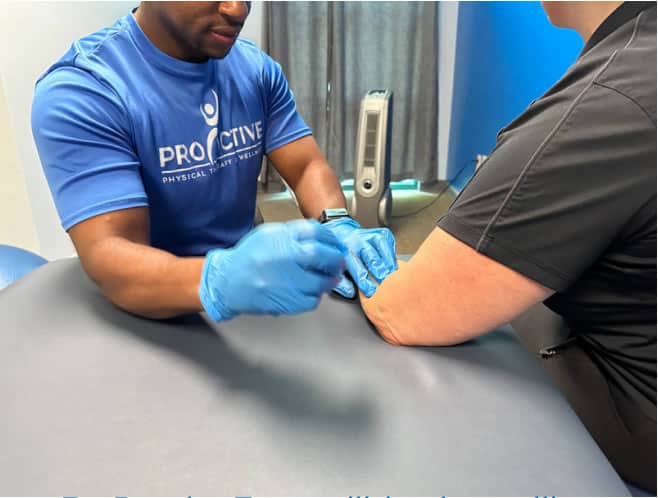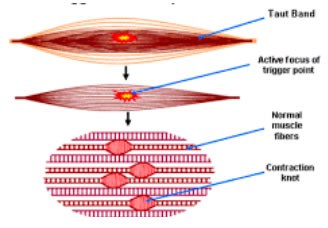Expert Dry Needling Therapy in Louisville, KY | ProActive Physical Therapy and Wellness

What is Dry Needling?
Dry needling (also called trigger point dry needling, intramuscular needling or electrical dry needling) is a technique that we use to treat musculoskeletal pain, tissue extensibility deficits and movement disorders. It’s typically used in association of other treatment techniques such as; exercise, stretching, massage and other techniques. With this technique, the therapist inserts a thin needle into or near your trigger points. The needles stimulate your muscles, which causes them to contract or twitch. This helps relieve pain and improve your range of motion. With dry needling, nothing is injected into your body hence the term “dry” needling.
Trigger points are knotted, tender areas that develop in your muscles. These trigger points can be highly sensitive and painful when palpated. Sometimes, a trigger point may be near the location of your pain but it is common for a trigger point to refer pain to other areas of your body. For example, a trigger point in your upper shoulder (upper trap) can cause headaches. Alternatively, trigger points in your hip can cause low back pain or even refer pain down your leg simulating sciatica.

How do Trigger Points Develop?
When muscles become overused or injured, the muscle fibers go into a state of tautness to protect themselves from further injury. This in turn causes the injured or overused muscle to not get adequate blood supply or the nutrients and oxygen that blood carries to the muscle. Even more, it causes the muscle to retain cell metabolic waste products further damaging the cell. In response to these processes, your muscle will start to release chemicals that sensitize your nerves resulting in pain and discomfort. The individual may also experience muscle weakness and restricted range of motion

The easiest way to think about this is to visualize water flowing through a water hose as you are cleaning your sidewalk. If you were to “kink” the water hose by 50% it would decrease the water flow, ultimately reducing your ability to clean the sidewalk. By eliminating the “kink”, you would be able to better clean your sidewalk and wash away the dirt.
Dry Needling Procedure
First, the physical therapist will sterilize the area to be treated and prepare the needle. The needles are always single-use, sterile and disposable. Next, they’ll use one hand or their fingers to feel (palpate) the area to locate the trigger point. With the opposite hand, they’ll gently insert the needle into the treatment area (through the skin and into the muscle).
Depending on your specific diagnosis, your therapist may leave the needle in place for as 30 seconds or as long as 20 minutes. The therapist may move then needle around until they achieve a “twitch response” - a quick spasm which is indicative that your muscle is reacting to the needle.
Your therapist may only use one to two needles during your first treatment. Once they see your response to the method, your therapist may start using more needles. This all depends on your specific condition. For instance, they may use up to 10 to 15 needles along your spine for a back treatment. At ProActive we also like to use electrical stimulation to further enhance the treatment.
During the treatment, you may feel muscle soreness or twitching. These sensations are normal and a sign that your muscles are responding to the treatment. It is common for some individuals to notice reduced pain and improved mobility immediately after a dry needling session. For others it may take multiple sessions
Common Aliments Treated With Dry Needling
Some of the top injuries treated with dry needling:

